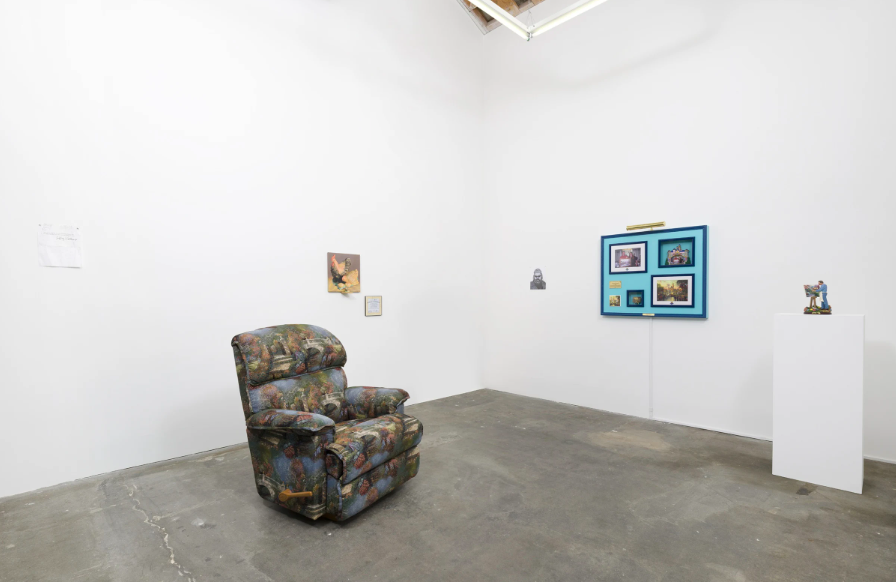Your cart is currently empty!
GALLERY ROUNDS: JEFFREY VALLANCE Tanya Bonakdar Gallery

The long, unlikely, and utterly genuine friendship between two artists—conceptualist cross-platform tragicomedian Jeffrey Vallance, and painter of wildly popular cottage-core idylls Thomas Kinkade—is commemorated in “Kinkadian La-Z-Boy Room,” a new exhibition by Vallance centered on “relics” of performances and souvenir acquisitions referring to the relationship. The assortment of works on paper, sculptural objects, paintings, and display cases is anchored by a plush recliner—Bridge of Hope Thomas Kinkade La-Z-Boy Recliner (Performance Relic) (2004-23)—which is advertised as upholstered in a bespoke fabric depicting Kinkade’s art. Nearby, a scruffy and a scrunched sheet of white paper bearing the typed line “This is my favorite Thomas Kinkade artwork. Not just any La-Z-Boy, but also has the Bridge of Hope” and the artist’s signature, turns out to be a voiceover cue from production on “Art for Everybody,” a Vallance-spurred documentary film on Kinkade currently on the festival circuit.
You can’t sit in the chair, but if you could, your line of sight would be focused on a small Kinkade “painting” which is a digital print on canvas with hand-embellished oil paint highlights—The Light of Peace, Desert Lighthouse by Vallance, his wife and frequent collaborator Victoria Reynolds, and “the Spirit of Thomas Kinkade.” No matter what you do, you can’t make the work come into focus. It remains stubbornly diffuse, past the level of misty atmospherics and into a depth of optical elusivity that feels like a metaphor.
Nearby, a statuette, a sort of trophy case, and other elements all point to Vallance’s four-decade habit of amassing collectibles celebrating events in his life from the epic to the invented, mundane, emblematic—letters from US Presidents, frozen chickens, autobiographical reliquaries, etc.—as well as to his frequent interactions with the spirit world, especially the afterlife of deceased artists. A statement from Vallance accompanying the show relates a series of unusual events in which Kinkade visited him from beyond the grave, in his dreams, and shared his secrets, which include his alter-ego as a bit of an emo outlaw. The installation both honors and channels the cottage painter but does so in a style that is very much in Vallance’s bailiwick. Maybe we can’t sit in the chair because it’s reserved for the ghost of Thomas Kinkade.